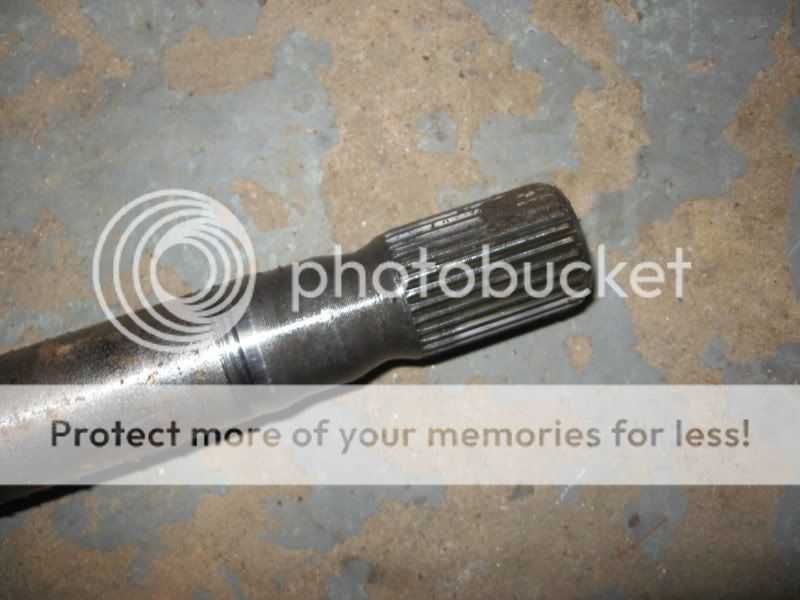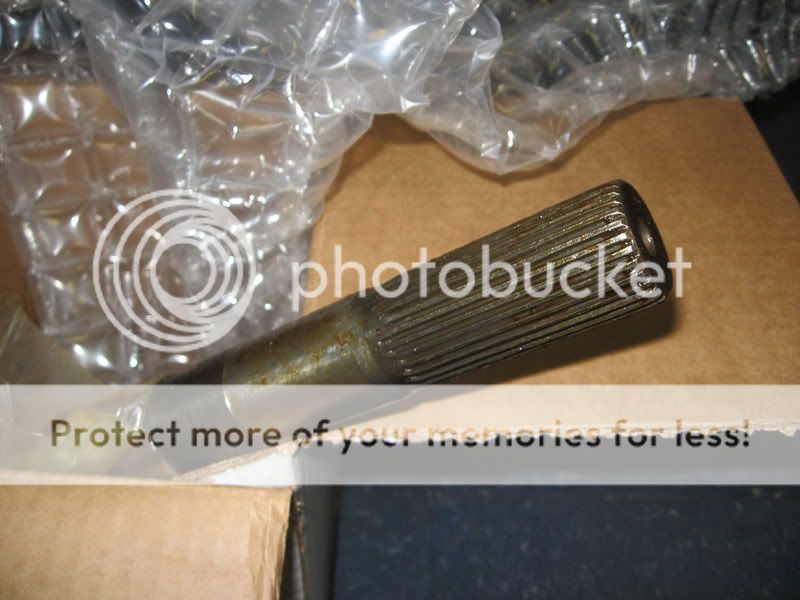somewhat...
the long side being of a thinner OD allows for the same strength as the short side.
angle of twist = Torque * Length / (Shear Modulus * Polar moment of inirtia)
Ø=TL/GIP
Shear Modulus (G) is given for the material...
Polar moment of inirtia for solid round stock is given by pi*diamiter^4 / 32
IP=пd^4/32
since the material is the same, and we want the same deflection for the same torque, we have to change the polar moment of inirita - AKA make the dimaiter smaller to compensate for the increased length.
The trick thing to do would be to make both shafts the same diamiter, but out of different materials, or with slightly different heat treating to alter not the diamiter, but to alter the shear modulus, then almost no end user whould have any idea what is going on :read:
The spicer shafts neck down at the splines, not allong the total length. Dana did this because making the shaft the same size all the way through, makes the splines the weakest part (minor diamiter of the splines being smaller than the rest of the shaft) and should the shaft fail, the stress concentration right there would cause the shaft to break AT the splines where they engage the side gear, and could cause other parts to fail based on the breakage... the neckdown is to have a point of failure that is not internal to the diff...









